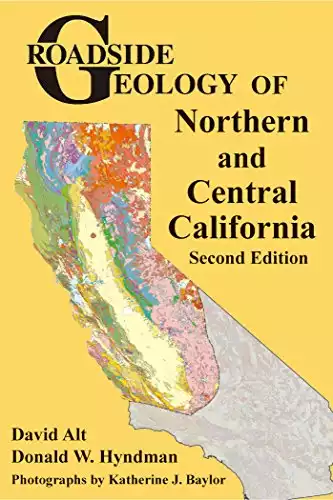Not all of California is on the coasts. If you decide to head inland a little bit then you’ll find a plethora of unique minerals that can be pulled from the Earth if you know where to look. With such a large size, it’s no wonder that California has such high mineral diversity. Still, even in the individual regions of the state, there are often myriad things to find.
So, let’s look at some of the rocks, minerals, and gemstones found in the middle of the Golden State, and some of the spots you might find them!
Related: List of Rocks, Minerals, and Gemstones Found in Northern California
Rocks, Minerals and Gemstones Found in Central California
1. Serpentine
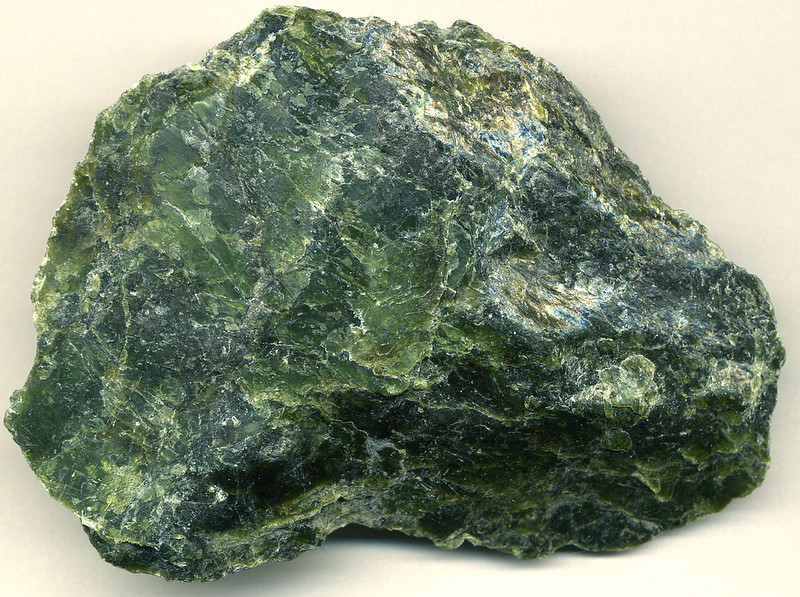
Serpentine is a green stone, often mistaken for jade. Despite the similar coloration in many cases, it turns out that serpentine is a fascinating mineral in its own right. Or rather, a series of minerals, since the serpentine group is comprised of several different polymorphs. A polymorph is a mineral that has the same chemical makeup as another one, but has formed into a different crystalline habit.
Despite the oddities of the differing crystal forms, serpentine is never found as single crystals. Instead, it’s generally found in a massive, microcrystalline form. The minerals that make it up are largely locked together, with individual crystals being invisible to the naked eye due to their small size.
One of the major constituents of serpentine is actually chrysotile. Chrysotile is the reason that serpentine has been named the State Rock of California, it’s one of the major components of asbestos. While asbestos is currently known mainly for causing mesothelioma and other respiratory agents, it was of economic importance in the past when it was used as a common fire barrier.
Serpentines in Central California can be found in hundreds of different locations in the Central Valley. It can also be found, in lesser amounts, in the Bay Area if you care to head to the coast.
2. Apatite
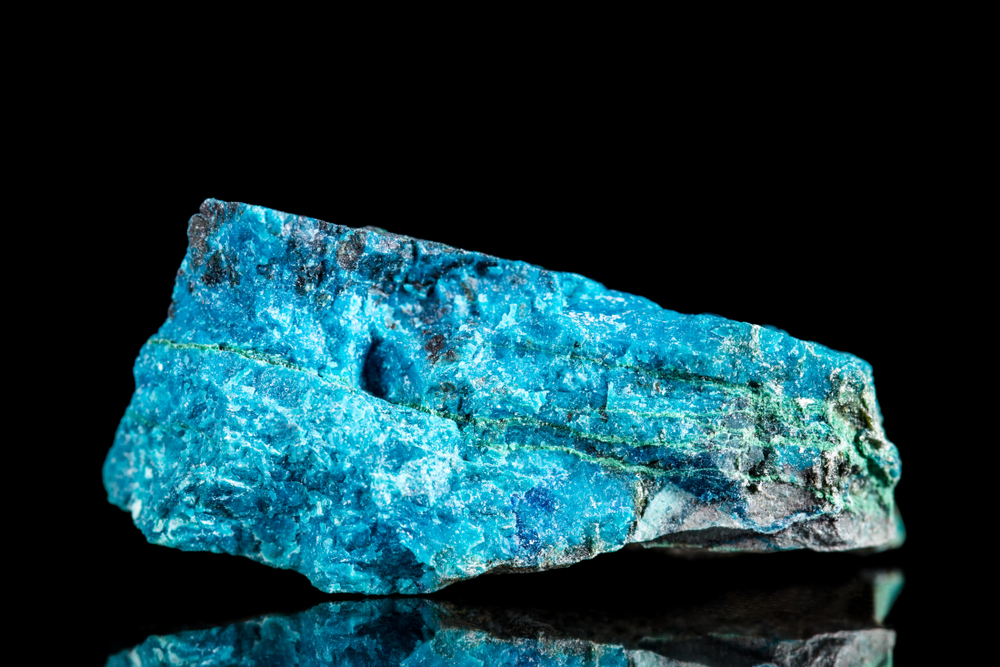
Apatite is a soft rock, most closely associated with the color blue. The name itself actually refers to a trio of different minerals: fluorapatite, hydroxyapatite, and chlorapatite. These phosphate minerals are actually quite common, but it’s less common to actually see them since they’re generally only found as microscopic grains in other rocks. It’s used in many different parts of geological analysis, but for collectors, it’s usually the more massive forms that are sought out.
While apatite is fairly soft, running at a 5.0 on the Moh’s scale, it’s sometimes cut for decorative use. Massive forms are generally seen as spheres, towers, and even tumbles while singular crystalline forms are sometimes cut as gems. Some apatite even has a cat’s eye effect, derived from included rutile.
Because it’s so high in phosphate chemicals, however, apatite is most commonly ground up for use in fertilizer. It’s one of the most important sources of phosphate for the industry. It’s also sometimes used as an ore for radioactive elements or rare-earth metals, which the mineral traps in some locations.
In Central California, the place most associated with apatite is Jackson Butte, southwest of Sacramento. It can also be found in the foothills of the Sierra Nevada Mountain Range.
3. Andalusite
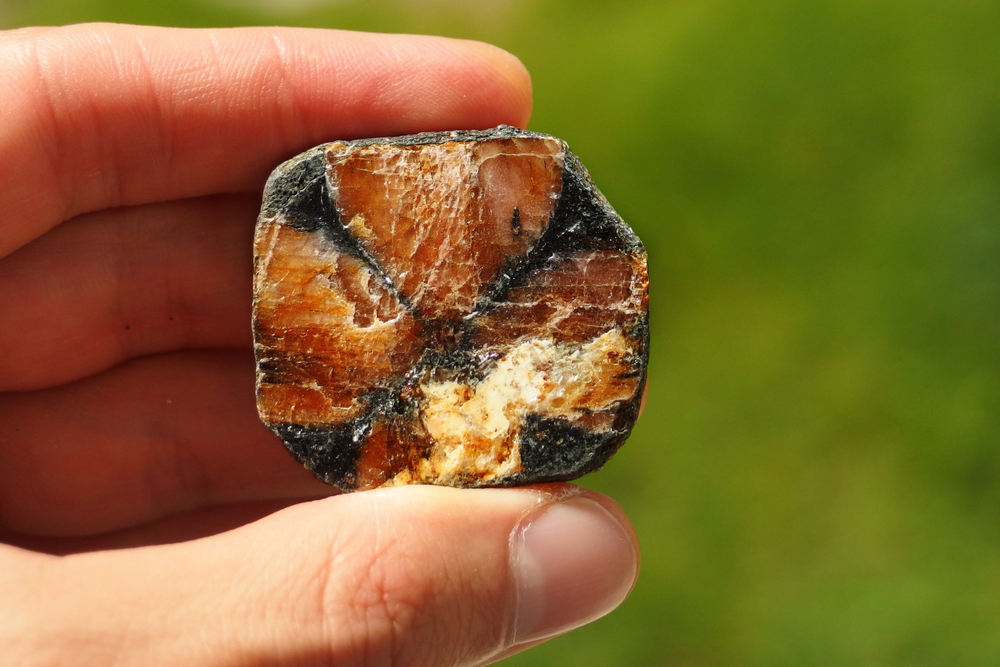
Andalusite is a strange, aluminum neosilicate mineral that’s closely related to kyanite and sillimanite. Specifically, this aluminum silicate mineral seems to form with low pressures and moderate (geologically speaking) temperatures. Sillimanite forms with lower temperature and pressure than the other two minerals and it’s commonly used as an index mineral to determine geological conditions in the past.
Andalusite comes in a few different varieties. There’s the included chiastolite, which has sharply defined crosses seen when the stone is cut in cross-sections. The green mineral viridine is closely related but is only found in Arizona in the United States. Clear crystals are also found in Brazil and Sri Lanka, which display incredible pleochroism when cut into faceted gemstones.
The variety found in Central California is pretty standard. It occurs as white to brown columnar masses with a prismatic crystal habitat. Most of them are completely opaque, but they have a distinctive shape that makes them pleasing to mineral collectors.
4. Epidote
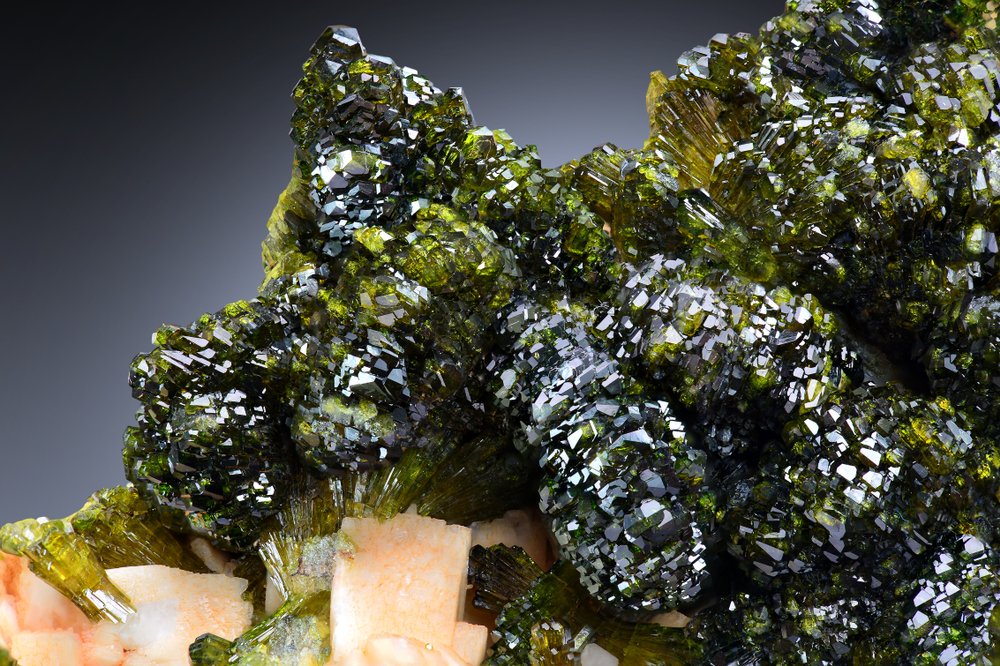
Epidote is a green mineral, often found intermixed with others such as small green bits in stones like granite. It’s a calcium aluminum iron silicate mineral, with a relatively complex formula. It’s also often found in metamorphic stones like schist or marble. Crystals from some localities have enough transparency for occasional use as faceted gemstones, but they’re not found in the United States.
Epidote crystals can be found in a few different habits, including massive stone which is generally green, prismatic crystals with striations on the surface, and sprays of fibrous, fan-like crystals. All three forms show up across the state.
The best epidote from Central California tends to come from around the Garnet Hill area, where large and well-formed crystals are found. It can be found in other crystalline forms in the region in and around Calaveras County as well.
That said, these aren’t the only location epidote shows up in Central California, and it can be found in most locations that bear other interesting minerals in the area.
5. Grossular Garnet
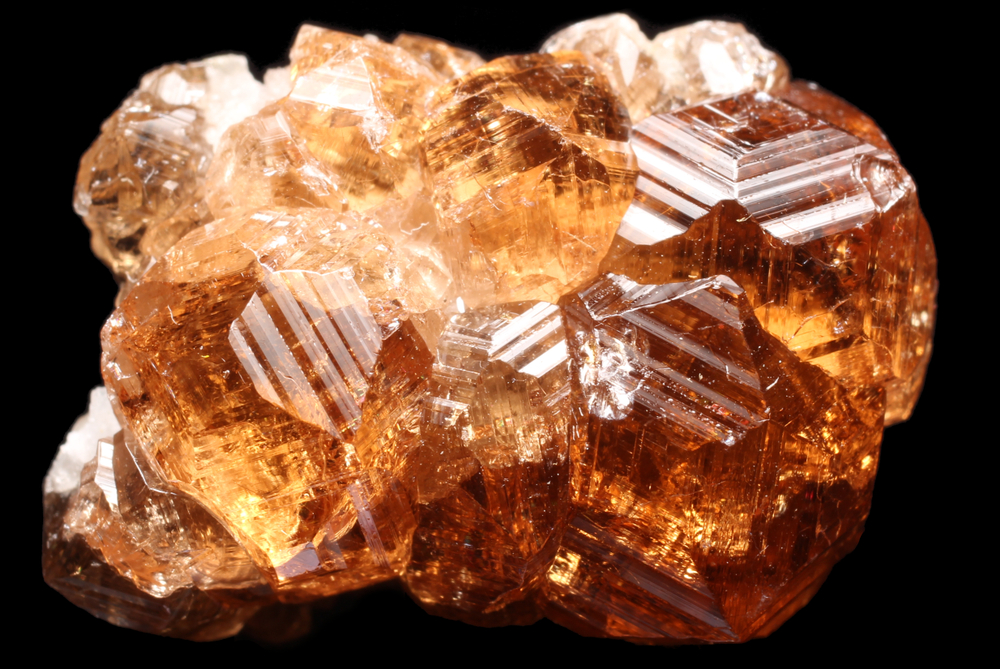
Garnets are a favorite of mine, but they come from many different families. Grossular garnets are generally an orange-ish color, although there are specimens with a much cleaner red found as well. There is also a location where green grossular garnets are pulled, which are popular for jewelry use, but only found outside of the United States.
Instead, the most common form seen in California is an orange-to-brown form known as hessonite, or “cinnamon garnet.” Hessonite is most often seen as mineral specimens, although some samples of material are fine enough to cut as gemstones. Grossular from this area is often seen intermixed with other crystals, including epidote and diopside, although it seems most of the gem-grade material comes from farther south in San Diego County.
Your best bet for collecting this material in Central California is going to be taking a look around Inyo County, where there are several known localities. It can also be found in the area around Garnet Hill in good amounts.
Most material from this region is going to be specimen or collector grade, and it’s a fairly common mineral so samples aren’t overly expensive. Gem-grade material is quite rare, but it can be valuable if recognized and cleaned properly.
6. Jade (Nephrite)
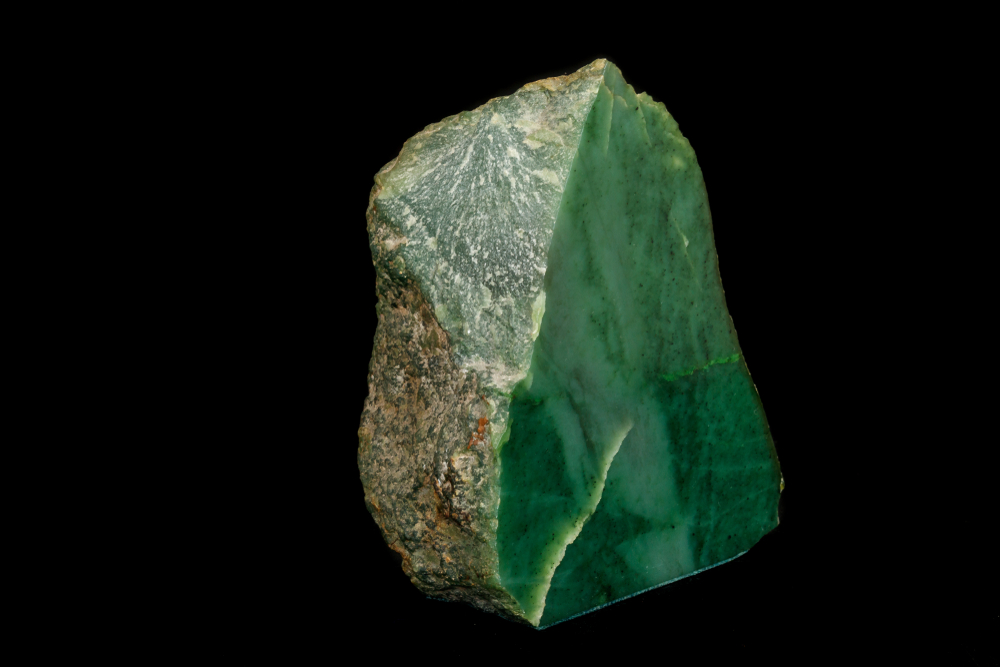
Closer to the Coast, near Big Sur, there’s a secret: one of the world’s only known underwater deposits of nephrite jade. While many collect the serpentine from the surrounding area, which can be attractive and of a light green color, finding actual nephrite jade on the beach is a rarity. If you’re going to stick to surface collection, the best time is after storms when the weather is calm. These rocky beaches can be dangerous to the unwary, so knowing the tidal times and being aware of your surroundings at all time are required.
The majority of the jade in the area around the aptly named Jade Cove is held offshore. Because of the high value of the stone, people in the past often floated enormous boulders back in from off-shore, creating environmental problems. These days the regulations are fairly strict. The area defined is actually south of Sand Dollar Beach and requires you to be a certain distance from shore.
For those willing to brave the waters, there’s a treasure trove of jade. Most of the material from the Big Sur area is green, resembling traditional jade, but other colors are sometimes found. Be prepared with hardness testing tools to catch any lookalikes, especially serpentine. You’re only allowed what you can physically carry out, so experienced divers will often take only the best pieces they can find.
Still, for most people, it’s much safer and easier to simply comb the beaches looking for a few pieces that have recently washed up. Of particular note is the botryoidal jade sometimes found in the area, and easily recognized by its distinctive shape in many cases.
7. Jasper
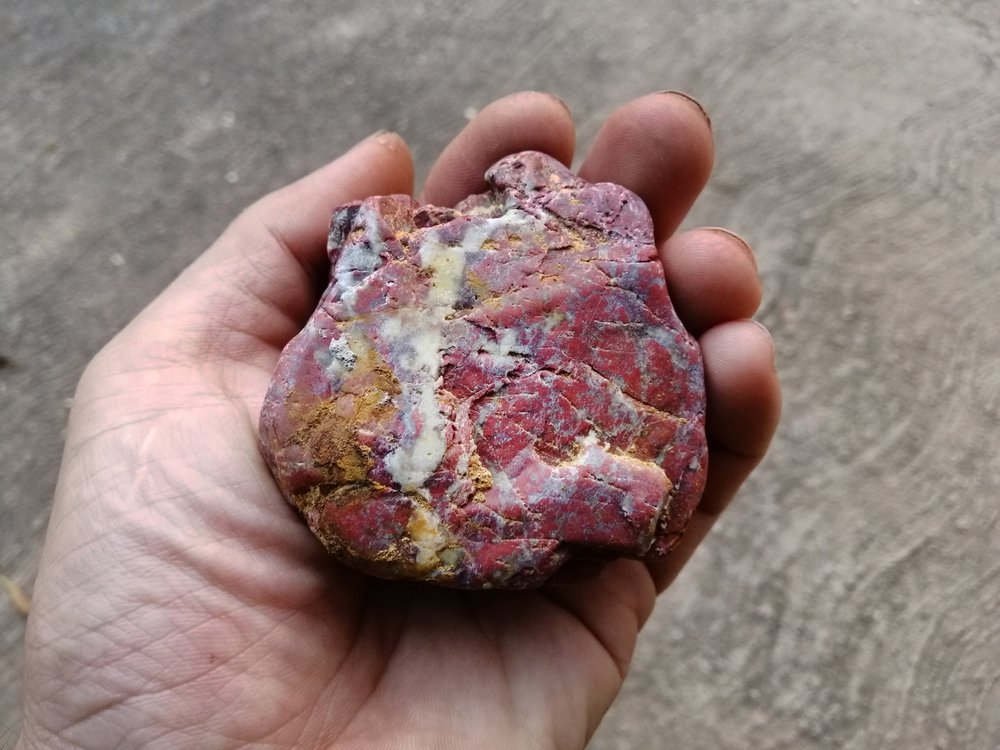
Jasper is quite common, especially in the Western United States. It’s defined as a colorful, cryptocrystalline form of silica that’s largely opaque. There are plenty of arguments to be had about the various types and names but there are plenty of stones that refuse simple classification due to the intermixture of different forms of silica such as agate and opal in the same nodule.
Most of the jasper in the state is reddish-brown or yellow, often intermixed. Brecciated samples are common. But here’s the thing: a lot of the jasper in California doesn’t reveal it’s true nature until it’s cut open. Finding a red and brown nodule only to have it turn out to be a brecciated white, blue, and red specimen on the interior was one of my first surprises and led to my love for the material.
There are a few named jaspers in this region of California, including some evergreen favorites like Morgan Hill Jasper, but they’re often mined out or held exclusively on private claims. Your best bet for interesting finds is simple: try going through dry riverbeds and creeks, looking for washes where dense stones have washed together.
8. Rhodonite
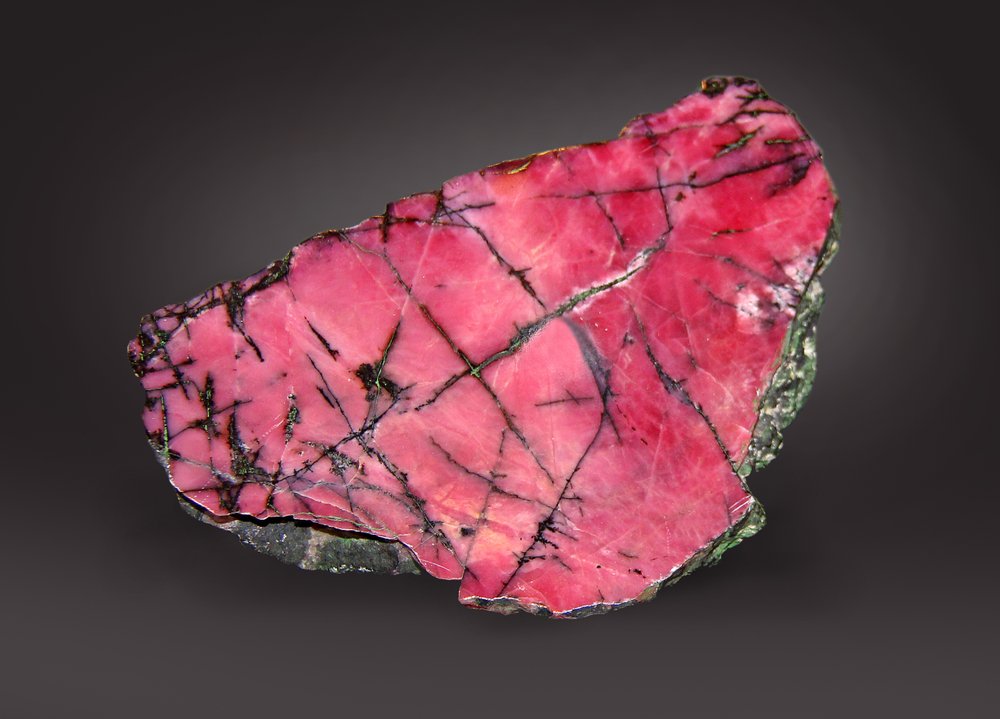
Rhodonite is a pink, manganese-bearing mineral that’s generally found intermixed with black veins of oxidized manganese. It’s a fairly common stone, although crystals of pure rhodonite are incredibly rare. It’s mostly used for samples and in decorative contexts, but can also be found in various pieces of jewelry. Rhodonite is a common find in California, also being present in the Central regions of the state.
Rhodonite itself is fairly hard, generally occurring within the 5.5-6.0 range. It’s most often found in the common massive form, which comes in a range of qualities. Each piece looks a bit different, both due to the varying amount of manganese oxide veins and the fact that in the rhodonite itself, some ions can be replaced, resulting in slightly differing colors.
Rhodonite is almost exclusively an ornamental stone, although it was used in the past as a manganese ore in some parts of India. Since there’s no alternate use it tends to be cheap material in the common massive form, but individual crystals are still rare enough that they’re often worth big bucks.
The material can be found all throughout the San Joaquin valley in Central California, with quite a few known deposits just outside of Fresno.
9. Gold in Quartz
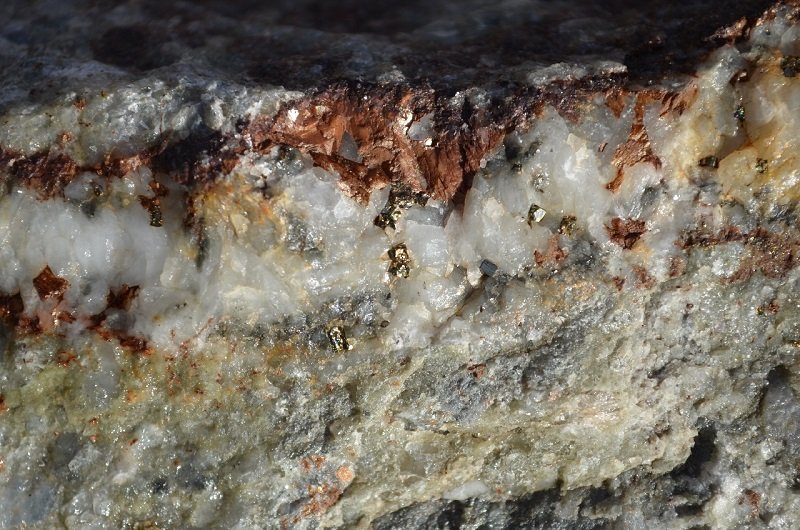
If there’s one thing most people know about California’s history, it’s those prospectors that flocked out here seeking gold. While the general image of a gold miner in California has them in the water, running a pan or possibly a sluice, all of these alluvial pockets had to come from somewhere. In the case of California, this is often native gold intermixed with white, milky quartz.
Related: How to Get Gold Out of Quartz (Step-by-Step Guide)
This material emerges from deep underground and is actively mined in a few locations. For those looking to acquire a piece, however, wandering around in underground gold mines generally isn’t an option. Instead, you’ll want to try prospecting near known underground deposits of gold. The gold quartz can easily be picked out of the pan when found, especially since both materials are quite dense. Less dramatic pieces are sometimes found, with an exterior of milky quartz but an easily noticeable difference in density.
If you do happen to find a good example, don’t just crush the gold out of it. These specimens are often worth far more than the weight of the gold in the material. This is doubly true since the gold-bearing quartz from this region is often cut as a gemstone for designer jewelry, where it’s cut en cabochon and the colors mix together well.
Gold hunting is never a sure thing, but getting out and prospecting is always a good time!

